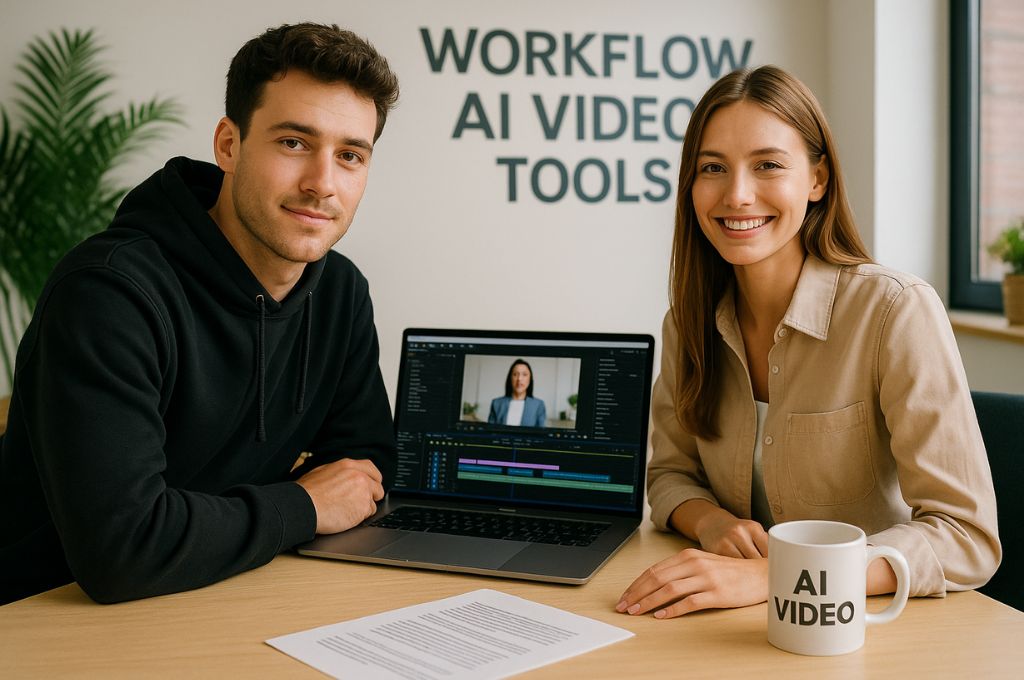Speed is a creative advantage. I learned that during a gadget launch last spring when the brief changed three times in a single afternoon. The team relied on me to keep every social teaser on track. By dropping an automated video generator into the process we met the schedule and even had room for extra tests. If you want a wider lens on why this kind of shift matters, the hidden power behind AI-generated video magic maps the full terrain.
The deadline crunch
New York runs on short cycles. Clients want finished clips before the morning coffee gets cold. In earlier years I stayed up patching After Effects comps line by line. A forty-second promo took a day of keyframes. Now a generator drafts a complete cut in the time it takes me to stretch my legs. Pressure drops, energy moves to story and rhythm instead of file management.
A tool for every bottleneck
My current stack covers four pillars that mirror the classic film workflow:
-
Script builder
Plain text prompt turns into timed captions and scene blocks. -
Shot composer
The app suggests framing, movement, and color grade based on the brief. -
Voice studio
One click clones my client’s tone and sets natural pauses. -
Platform exporter
The final cut arrives in vertical, square, and landscape versions with matching file names.
Each module replaces a manual choke point. Together they form a loop that keeps ideas flowing instead of stalling at hand-offs.
A week in practice
Last month a boutique fashion label asked for daily reels during its pop-up tour. We built a template on Monday, then fed fresh product lines into the prompt field each night. The tool generated three variants per reel. I trimmed the best, scheduled posts through Buffer, and moved on. Five days, twenty reels, zero late nights.
Key numbers
-
Time to first draft: 15 minutes
-
Total human editing per reel: 10 minutes
-
Engagement uplift versus static image: 34 percent
The math earns its keep in every planning meeting.
Making a repeatable pipeline
Speed is nothing without order. I lock brand rules into preset slots:
-
Color codes stored as hex to avoid drift.
-
Typography pairs saved for lower thirds.
-
Version tags embedded in filenames to track tests.
All output lands in a shared drive. A Trello automation turns each new render into a card with the prompt in the description. Stakeholders leave notes on the thumbnail instead of email threads. This record proves priceless during audits.
Collaboration without friction
Design lives on feedback. When a client watches a real clip during a video call, changes become clear and fast. They swap a headline on the live panel, the tool regenerates the frame, and the approval shakes out before the call ends. Junior team members gain confidence because they can test ideas without wrestling with timelines or codec settings.
Measuring return on effort
I track three metrics:
-
Draft turnaround fell by two thirds.
-
Cost per asset dropped by half after subscription replaced freelance edits.
-
Variant volume tripled, giving marketing more shots at a winner.
Numbers keep the process honest and open doors for new experiments.
Pitfalls to watch
| Risk | Symptom | Simple Fix |
|---|---|---|
| Over-templating | Videos feel cloned | Refresh color grade every fifth render |
| Rights fog | Stock clip flagged | Run a license check before export |
| Asset clutter | Drives fill fast | Archive low-performers monthly |
A little discipline guards the gains.
Automated video tools shift the creative game from heavy lifting to fine tuning. They turn deadlines into movable targets and let stories breathe. When your next task calls for lightning-fast still images, creating visuals ten times faster with Fotor AI extends the same efficiency to every banner and hero shot.

